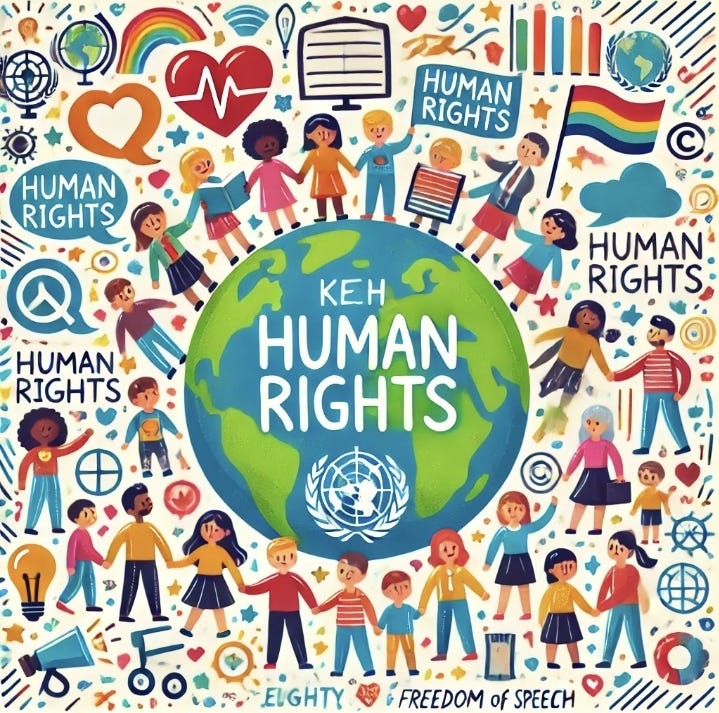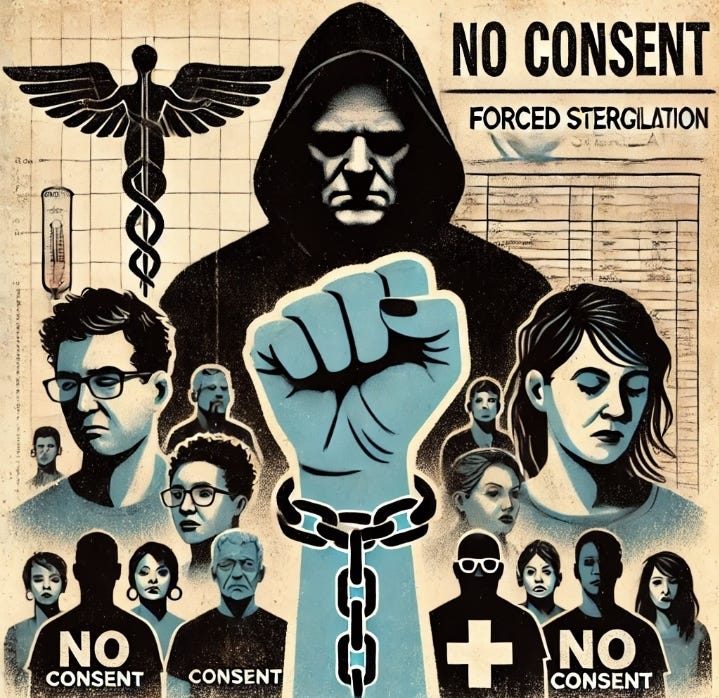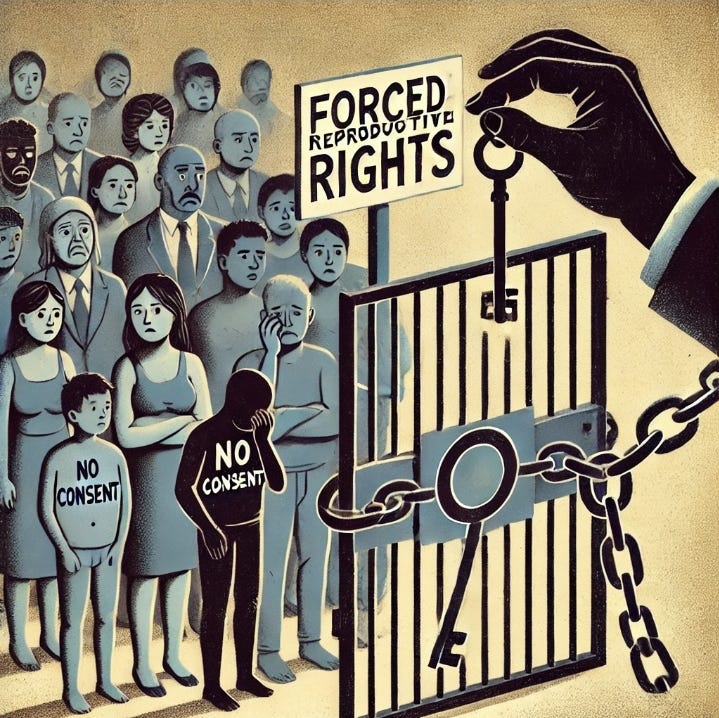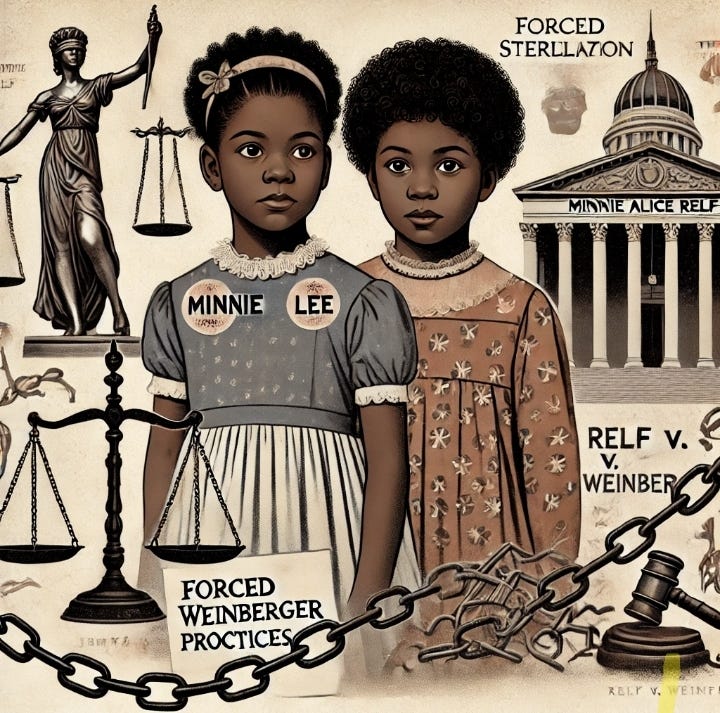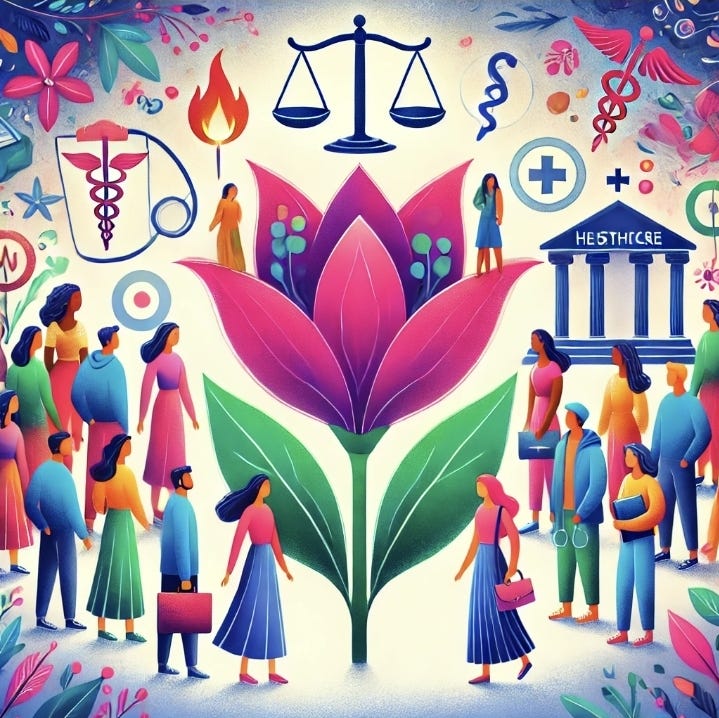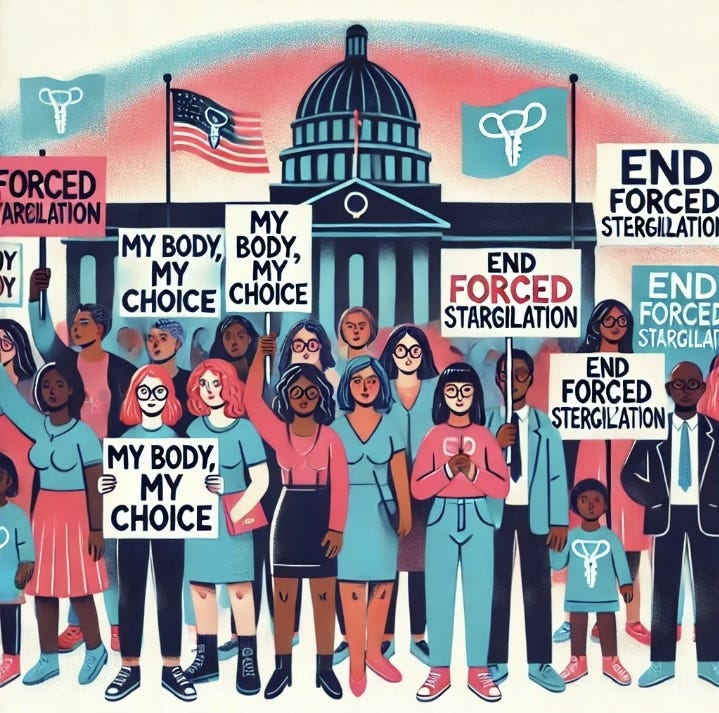Revisiting History’s Darkest Corners: Forced Sterilization in America and Its Ongoing Impact
Government Control Over Bodies, Then and Now
I still remember the discomfort I felt sitting in my college class on Holocaust Studies, where I was one of the few Gentiles. The anger and disbelief I felt while reading about the Nazi regime’s forced sterilization programs felt almost visceral. These atrocities seemed locked in the history books, heinous actions from a past we promised never to repeat.
But I was wrong. Forced sterilization isn’t just a dark chapter of history—it’s happening in the United States today. I discovered this unsettling truth through an email I received from a man who had experienced cruelty firsthand as a disabled adult. It was like a punch to the gut to realize these human rights violations are still happening—not just to individuals, but to entire communities society deems unworthy of full autonomy.
Discovering the Disturbing Truth: Forced Sterilization in the Present Day
The man who reached out to me is Mike. He’s 61 and was born with mild cerebral palsy. Over the years, he’s advocated tirelessly for others with disabilities, but his story was marred by personal exploitation at the hands of those he should have been able to trust—his family, a broken system, and a society that too often turns a blind eye. One detail that he shared stood out: the mention of forced sterilization of people with disabilities.
Horrified I thought “How is this still happening?” My research led me to a 2019 report by the National Women’s Law Center (NWLC) which revealed that 31 states and Washington, D.C., still have laws that allow the sterilization of people with disabilities without their consent.
These laws give guardians, courts, or even medical professionals the power to make irreversible decisions about someone’s reproductive rights, all under the guise of acting in the “best interest” of the individual. The language might be softer now—using terms like “protection” or “care”—but the result is the same: a violation of basic human rights.
The History We Need to Remember: Eugenics and Forced Sterilization
Forced sterilization in America has its roots in the early 20th-century eugenics movement, which sought to “improve” society by preventing those deemed “unfit” from reproducing. Between 1907 and the late 1970s, approximately 64,000 individuals victims were disproportionately people of color, people with disabilities, and those living in poverty.
One infamous case involved Minnie Lee and Mary Alice Relf, two Black sisters, ages 12 and 14, who were forcibly sterilized in Alabama in 1973. Their case, exposed by the Southern Poverty Law Center, showed that the federal government had been using taxpayer money to fund sterilizations without proper consent ([American Journal of Public Health]This led to new regulations requiring informed consent, but it did not completely end the practice.
Present-Day Parallels: The Case of the Irwin County Detention Center
Fast forward to 2020, when a whistleblower exposed another appalling violation. A nurse at the Irwin County Detention Center in Georgia revealed that women detained there were subjected to hysterectomies and other gynecological procedures without their full understanding or consent ([The Hill]. Investigations are ongoing, but the initial findings suggest these women were treated as less than human, stripped of their reproductive rights and their voices.
Forced Sterilization and Forced Pregnancy: Two Sides of the Same Coin
If the idea of forced sterilization infuriates you, as it should, consider the reality we’re living in now: the government’s control over a person’s reproductive rights isn’t limited to deciding who can’t have children, but also about deciding who must carry a pregnancy to term.
The same argument used to justify forced sterilizations—protecting society’s interests, knowing what’s “best” for individuals—is being used today to restrict women’s access to abortion. Just as forced sterilization takes away a person’s right to have children, forced pregnancy robs a person of the right to choose whether or not to bear a child.
Vote YES on Amendment 4 in Florida: A Step Toward Reproductive Justice
In Florida, you have a chance to take a stand. On November 5th, Vote YES on Amendment 4, a measure designed to protect the right to make personal healthcare decisions without government interference. It’s about ensuring that people—not politicians—decide what happens to their bodies.
Just as we should never allow the government to decide who can and cannot have children, we should also never allow it to decide who must. This is a moment to show that bodily autonomy matters—whether it’s the right to refuse sterilization or the right to terminate a pregnancy.
We cannot turn a blind eye to history or repeat its mistakes. If you believe in the right to make your own healthcare choices, if you believe in fundamental human rights, then make your voice heard. Vote YES on Amendment 4 this November 5th and take a stand against government control over our bodies.
Sources:
- [National Women’s Law Center (NWLC) Report: Forced Sterilization of Disabled People in the United States](https://nwlc.org/resources/forced-sterilization-of-disabled-people-in-the-united-states/)
- [Autistic Women & Nonbinary Network (AWN)](https://awnnetwork.org)
- [American Journal of Public Health: Case Study on Minnie Lee and Mary Alice Relf](https://ajph.aphapublications.org/doi/10.2105/AJPH.2007.127258)
- [Lombardo, P. A. (2008). Three Generations, No Imbeciles: Eugenics, the Supreme Court, and Buck v. Bell. Johns Hopkins University Press](https://books.google.com/books?id=4LAj7u02GQoC&pg=PA276&lpg=PA276&dq=64,000+sterilizations+eugenics+movement&source=bl&ots=1KPHAP0NGZ&sig=ACfU3U1s3UT8XjTG3NyJ23ME2y_uCu6kHw&hl=en&sa=X&ved=2ahUKEwj1-u_yqrD8AhWWVkEAHfB9BZMQ6AF6BAgfEAM#v=onepage&q=64%2C000%20sterilizations%20eugenics%20movement&f=false)
- [The Hill: Over Half the Country Has Laws That Allow Forced Sterilizations](https://thehill.com/changing-america/respect/accessibility/593113-over-half-the-country-has-laws-that-allow-forced-sterilizations-new-report)
- [National Center on Elder Abuse, 2012: Abuse of People with Disabilities](https://ncea.acl.gov/NCEA/media/docs/ResearchBrief_AbuseDisability-2013.pdf)





